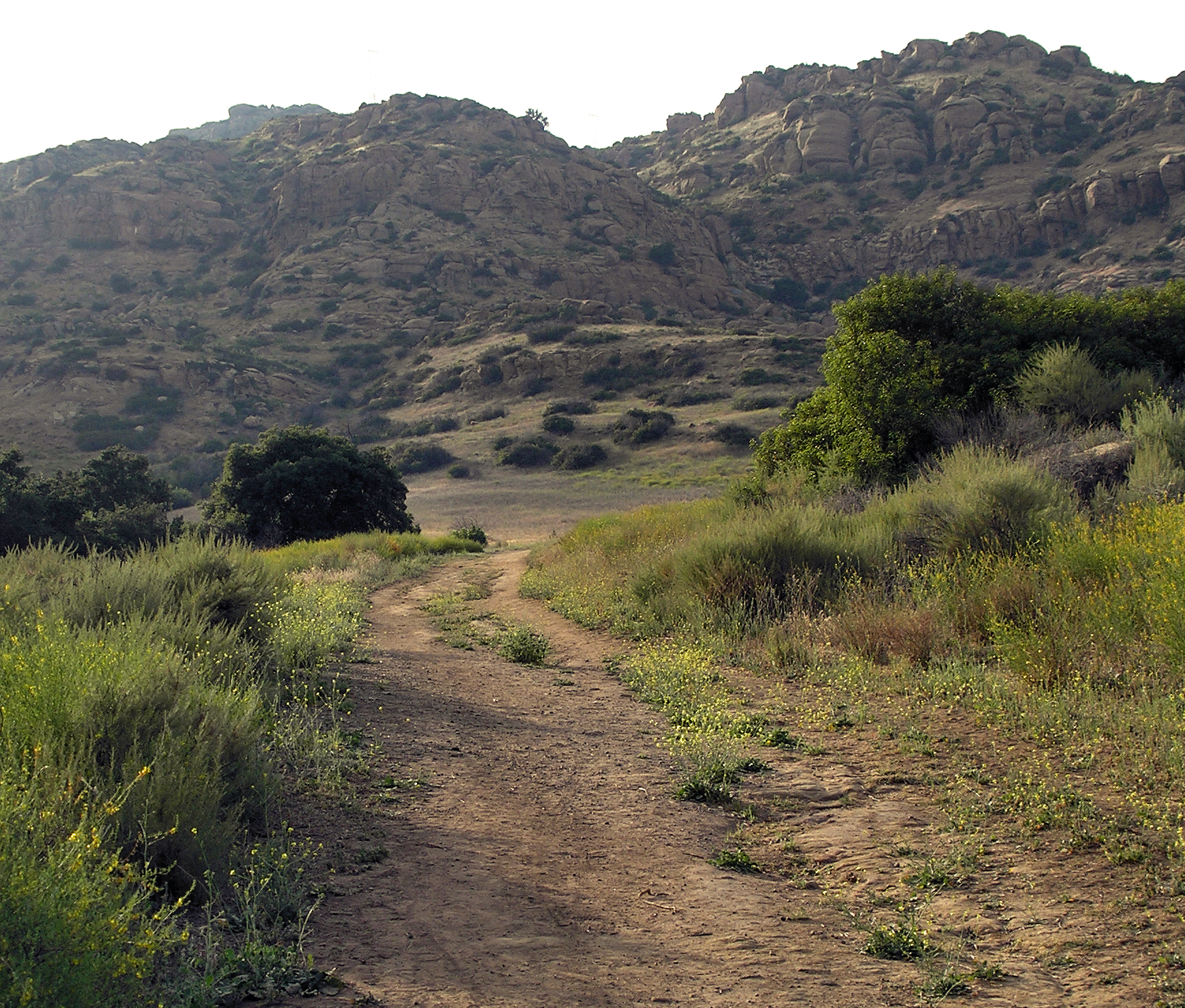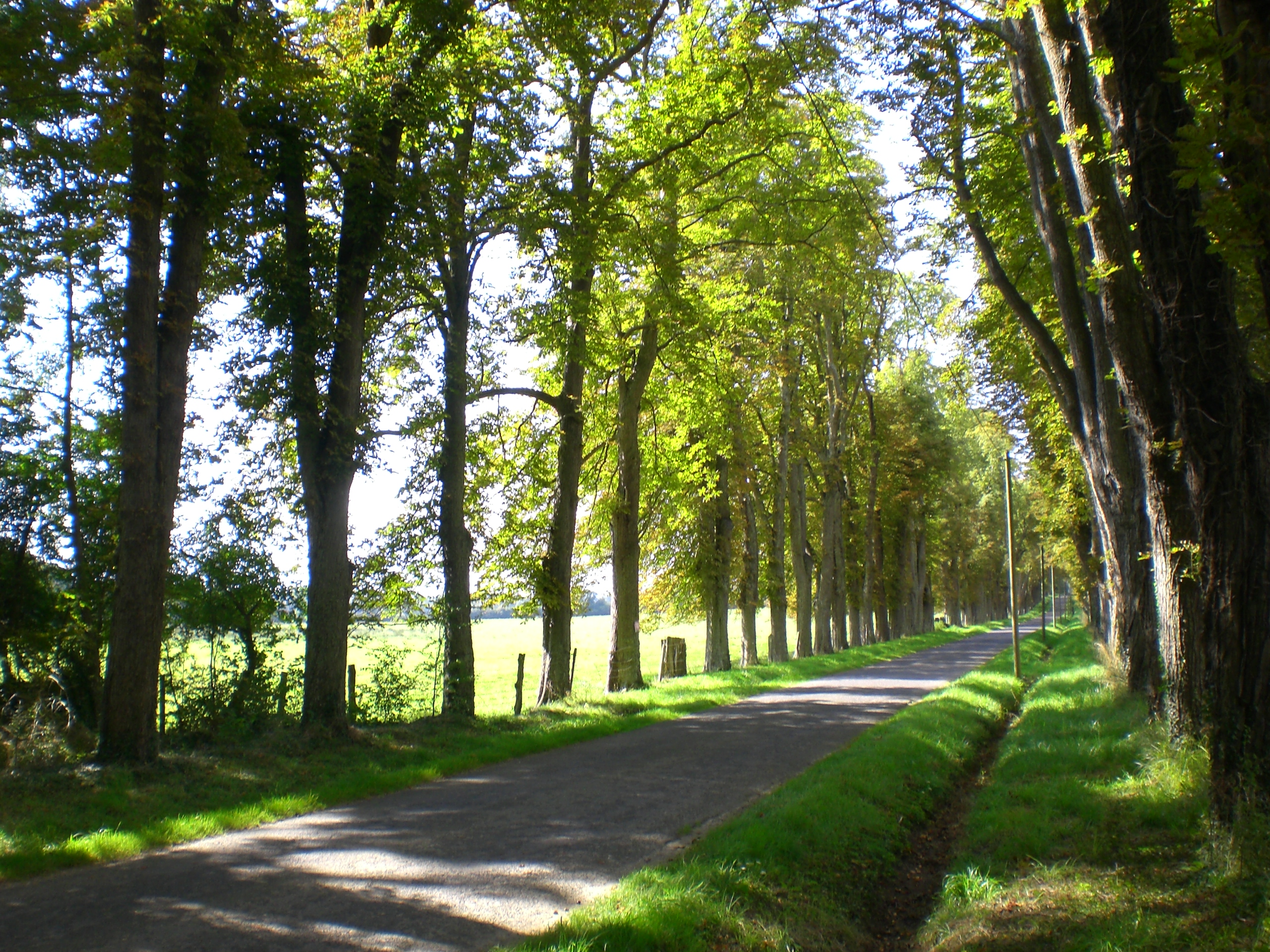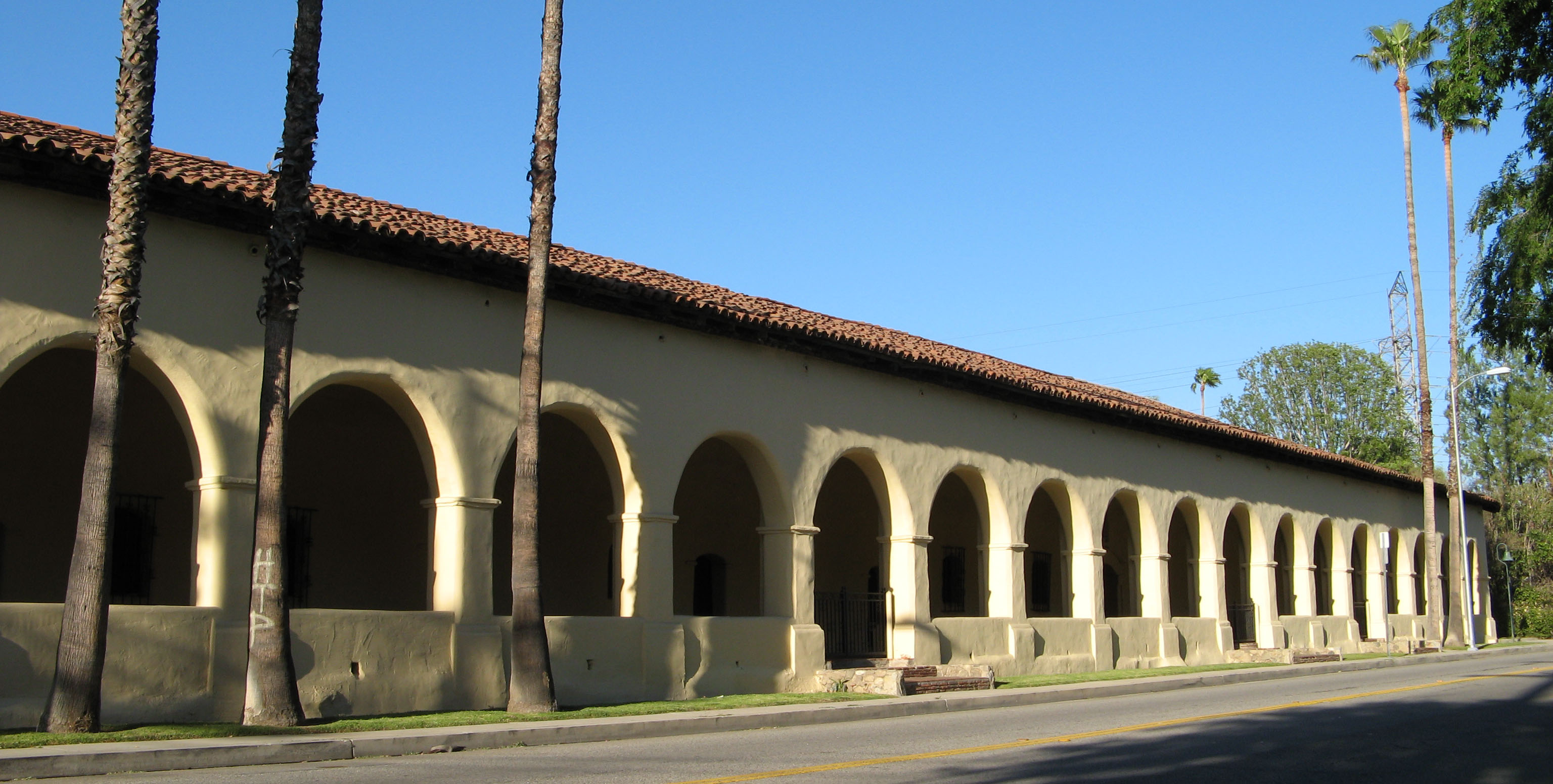|
Lassen Street Olive Trees (Chatsworth, California)
The Lassen Street Olive Trees, also known as 76 Mature Olive Trees, are a Los Angeles Historic-Cultural Monument located in the Chatsworth community of the northwestern San Fernando Valley, in Los Angeles, Southern California. History An avenue (''alleé'') of Olive trees (''Olea europaea'') were planted in 1890 along a then dirt road by N. A. Grey, who owned property there. They are believed to have been grown from cuttings taken from the Spanish Colonial c. 1800 planted olive orchard trees at the Mission San Fernando Rey de España across the Valley. . accessed 2.14.2014. When the site was designated a Historic-Cultural Monument in 1967, there were 76 olive trees along several blocks of western of Lassen Street. According to the Chatsworth Daughters of the American Revolution chapter, there are 49 trees surviving/remaining in the 2010s. See also *History of the San Fernando Valley *List of Los Angeles Historic-Cultural Monuments in the San Fernando Valley This is a ... [...More Info...] [...Related Items...] OR: [Wikipedia] [Google] [Baidu] |
Chatsworth, Los Angeles
Chatsworth is a suburban neighborhood in the City of Los Angeles, California, in the San Fernando Valley. The area was home to Native Americans, some of whom left caves containing rock art. Chatsworth was explored and colonized by the Spanish beginning in the 18th century. The land was part of a Spanish land grant, Rancho Ex-Mission San Fernando, in the 19th century, and after the United States took over the land following the Mexican–American War, it was the largest such grant in California. Settlement and development followed. Chatsworth has seven public and eight private schools. There are large open-space and smaller recreational parks as well as a public library and a transportation center. Distinctive features are the former Chatsworth Reservoir and the Santa Susana Field Laboratory. The neighborhood has one of the lowest population densities in Los Angeles and a relatively high income level. Chatsworth is the home of the Iverson Movie Ranch, a 500-acre area which was ... [...More Info...] [...Related Items...] OR: [Wikipedia] [Google] [Baidu] |
Los Angeles Historic-Cultural Monument
Los Angeles Historic-Cultural Monuments are sites which have been designated by the Los Angeles, California, Cultural Heritage Commission as worthy of preservation based on architectural, historic and cultural criteria. History The Historic-Cultural Monument process has its origin in the Historic Buildings Committee formed in 1958 by the Los Angeles chapter of the American Institute of Architects. As growth and development in Los Angeles threatened the city's historic landmarks, the committee sought to implement a formal preservation program in cooperation with local civic, cultural and business organizations and municipal leaders. On April 30, 1962, a historic preservation ordinance proposed by the AIA committee was passed. The original Cultural Heritage Board (later renamed a commission) was formed in the summer of 1962, consisting of William Woollett, FAIA, Bonnie H. Riedel, Carl S. Dentzel, Senaida Sullivan and Edith Gibbs Vaughan. The board met for the first time in August ... [...More Info...] [...Related Items...] OR: [Wikipedia] [Google] [Baidu] |
San Fernando Valley
The San Fernando Valley, known locally as the Valley, is an urbanized valley in Los Angeles County, California. Located to the north of the Los Angeles Basin, it contains a large portion of the City of Los Angeles, as well as unincorporated areas and the Municipal corporation, incorporated cities of Burbank, California, Burbank, Calabasas, California, Calabasas, Glendale, California, Glendale, Hidden Hills, California, Hidden Hills, and San Fernando, California, San Fernando. The valley is well known for its iconic film studios such as Warner Bros. Studios, Burbank, Warner Bros. Studio and Walt Disney Studios (Burbank), Walt Disney Studios. In addition, it is home to the Universal Studios Hollywood theme park. Geography The San Fernando Valley is about bound by the Santa Susana Mountains to the northwest, the Simi Hills to the west, the Santa Monica Mountains and Chalk Hills to the south, the Verdugo Mountains to the east, and the San Gabriel Mountains to the northeast. The ... [...More Info...] [...Related Items...] OR: [Wikipedia] [Google] [Baidu] |
Los Angeles, California
Los Angeles ( ; es, Los Ángeles, link=no , ), often referred to by its initials L.A., is the largest city in the state of California and the second most populous city in the United States after New York City, as well as one of the world's most populous megacities. Los Angeles is the commercial, financial, and cultural center of Southern California. With a population of roughly 3.9 million residents within the city limits , Los Angeles is known for its Mediterranean climate, ethnic and cultural diversity, being the home of the Hollywood film industry, and its sprawling metropolitan area. The city of Los Angeles lies in a basin in Southern California adjacent to the Pacific Ocean in the west and extending through the Santa Monica Mountains and north into the San Fernando Valley, with the city bordering the San Gabriel Valley to it's east. It covers about , and is the county seat of Los Angeles County, which is the most populous county in the United States with an estim ... [...More Info...] [...Related Items...] OR: [Wikipedia] [Google] [Baidu] |
Avenue (landscape)
In landscaping, an avenue (from the French language, French), alameda (from the Portuguese language, Portuguese and Spanish language, Spanish), or allée (from the French), is traditionally a straight path or road with a line of trees or large shrubs running along each side, which is used, as its Latin source ''venire'' ("to come") indicates, to emphasize the "coming to," or ''arrival'' at a landscape or architecture, architectural feature. In most cases, the trees planted in an avenue will be all of the same species or cultivar, so as to give uniform appearance along the full length of the avenue. The French term ''allée'' is used for avenues planted in parks and landscape gardens, as well as boulevards such as the ''Grande Allée'' in Quebec City, Canada, and ''Karl-Marx-Allee'' in Berlin. History The avenue is one of the oldest ideas in the history of gardens. An Avenue of Sphinxes still leads to the tomb of the pharaoh Hatshepsut. Avenues similarly defined by guardian stone ... [...More Info...] [...Related Items...] OR: [Wikipedia] [Google] [Baidu] |
Olea Europaea
The olive, botanical name ''Olea europaea'', meaning 'European olive' in Latin, is a species of small tree or shrub in the family Oleaceae, found traditionally in the Mediterranean Basin. When in shrub form, it is known as ''Olea europaea'' 'Montra', dwarf olive, or little olive. The species is cultivated in all the countries of the Mediterranean, as well as in Australia, New Zealand, North and South America and South Africa. ''Olea europaea'' is the type species for the genus ''Olea''. The olive's fruit, also called an "olive", is of major agricultural importance in the Mediterranean region as the source of olive oil; it is one of the core ingredients in Mediterranean cuisine. The tree and its fruit give their name to the plant family, which also includes species such as lilac, jasmine, forsythia, and the true ash tree. Thousands of cultivars of the olive tree are known. Olive cultivars may be used primarily for oil, eating, or both. Olives cultivated for consumption ar ... [...More Info...] [...Related Items...] OR: [Wikipedia] [Google] [Baidu] |
Mission San Fernando Rey De España
Mission San Fernando Rey de España is a Spanish mission in the Mission Hills community of Los Angeles, California. The mission was founded on 8 September 1797 at the site of Achooykomenga, and was the seventeenth of the twenty-one Spanish missions established in Alta California. Named for Saint Ferdinand, the mission is the namesake of the nearby city of San Fernando and the San Fernando Valley. The mission was secularized in 1834 and returned to the Catholic Church in 1861; it became a working church in 1920. Today the mission grounds function as a museum; the church is a chapel of ease of the Archdiocese of Los Angeles. History In 1769, the Spanish Portolà expedition – the first Europeans to see inland areas of California – traveled north through the San Fernando Valley. On August 7 they camped at a watering place near where the mission would later be established. Fray Juan Crespí, a Franciscan missionary travelling with the expedition, noted in his diary that t ... [...More Info...] [...Related Items...] OR: [Wikipedia] [Google] [Baidu] |
History Of The San Fernando Valley
The history of the San Fernando Valley from its exploration by the 1769 Portola expedition to the annexation of much of it by the City of Los Angeles in 1915 is a story of booms and busts, as cattle ranching, sheep ranching, large-scale wheat farming, and fruit orchards flourished and faded. Throughout its history, settlement in the San Fernando Valley (usually called simply "The Valley") was shaped by availability of reliable water supplies and by proximity to the major transportation routes through the surrounding mountains. Native peoples and the coming of the Spaniards Topography and early settlement Before the flood control measures of the 20th century, the location of human settlements in the San Fernando Valley was constrained by two forces: the necessity of avoiding winter floods and need for year-round water sources to sustain communities through the dry summer and fall months. In winter, torrential downpours over the western-draining watershed of the San Gabriel Mountai ... [...More Info...] [...Related Items...] OR: [Wikipedia] [Google] [Baidu] |
List Of Los Angeles Historic-Cultural Monuments In The San Fernando Valley
This is a list of Los Angeles Historic-Cultural Monuments in the San Fernando Valley, California. It includes Historic-Cultural Monuments in the San Fernando Valley as well as the adjacent Crescenta Valley. In total, there are more than 70 Historic-Cultural Monuments (HCM) in the San Fernando and Crescenta Valleys. A handful of additional historic sites in the valleys have been designated as California Historical Landmarks or listed on the National Register of Historic Places. The sites that are within City of Los Angeles borders are covered by two commissions of the Los Angeles Department of City Planning: the North Valley Area Planning Commission and the South Valley Area Planning Commission. They are designated by the City's Cultural Heritage Commission. Overview of the Valley's Historic-Cultural Monuments The Historic-Cultural Monuments in the San Fernando Valley are spread across the Valley from Chatsworth in the northwest to Studio City in the southeast, and from th ... [...More Info...] [...Related Items...] OR: [Wikipedia] [Google] [Baidu] |
Los Angeles Historic-Cultural Monuments
Los Angeles Historic-Cultural Monuments are sites which have been designated by the Los Angeles, California, Cultural Heritage Commission as worthy of preservation based on architectural, historic and cultural criteria. History The Historic-Cultural Monument process has its origin in the Historic Buildings Committee formed in 1958 by the Los Angeles chapter of the American Institute of Architects. As growth and development in Los Angeles threatened the city's historic landmarks, the committee sought to implement a formal preservation program in cooperation with local civic, cultural and business organizations and municipal leaders. On April 30, 1962, a historic preservation ordinance proposed by the AIA committee was passed. The original Cultural Heritage Board (later renamed a commission) was formed in the summer of 1962, consisting of William Woollett, FAIA, Bonnie H. Riedel, Carl S. Dentzel, Senaida Sullivan and Edith Gibbs Vaughan. The board met for the first time in August ... [...More Info...] [...Related Items...] OR: [Wikipedia] [Google] [Baidu] |
Individual Olive Trees
An individual is that which exists as a distinct entity. Individuality (or self-hood) is the state or quality of being an individual; particularly (in the case of humans) of being a person unique from other people and possessing one's own needs or goals, rights and responsibilities. The concept of an individual features in diverse fields, including biology, law, and philosophy. Etymology From the 15th century and earlier (and also today within the fields of statistics and metaphysics) ''individual'' meant " indivisible", typically describing any numerically singular thing, but sometimes meaning "a person". From the 17th century on, ''individual'' has indicated separateness, as in individualism. Law Although individuality and individualism are commonly considered to mature with age/time and experience/wealth, a sane adult human being is usually considered by the state as an "individual person" in law, even if the person denies individual culpability ("I followed instruct ... [...More Info...] [...Related Items...] OR: [Wikipedia] [Google] [Baidu] |









